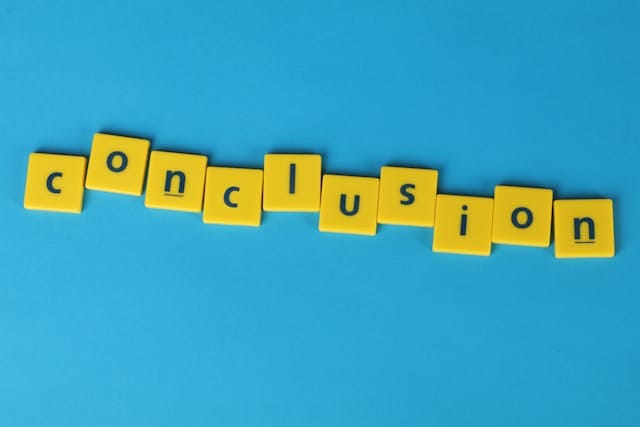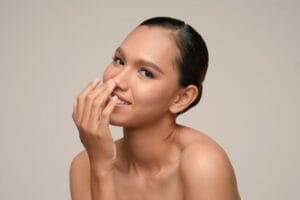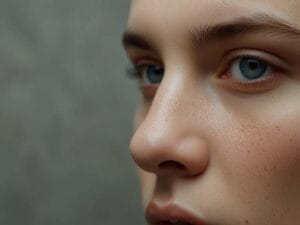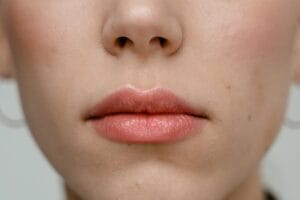Rhinoplasty Final Results: What to Expect & Timeline
Sarah had her rhinoplasty six months ago. The initial swelling subsided, but her nose still looked different every morning. Some days it seemed perfect; other days, it felt too wide or not quite right. She kept wondering: When will I see my rhinoplasty final results? This uncertainty is something countless patients experience—and it’s completely normal. Understanding the timeline for rhinoplasty final results isn’t just about patience; it’s about setting realistic expectations and recognizing that healing is a gradual, sometimes unpredictable process.
When Do You See Rhinoplasty Final Results?
Most patients see significant improvement in their rhinoplasty final results within 6-12 months, but complete healing can take up to 18 months or longer. Initial swelling reduction happens in the first 3-6 months, with the nose shape becoming more refined over time. The tip typically takes longest to settle—sometimes up to two years. Factors like skin thickness, surgical technique, and individual healing rates all influence when you’ll see your final rhinoplasty results.
The Realistic Timeline for Rhinoplasty Final Results
Here’s the thing about rhinoplasty final results: they don’t appear overnight. Actually, they don’t even appear in a few months. The process is more like watching a photograph develop slowly in a darkroom—gradual, sometimes frustrating, but ultimately revealing something you’ve been waiting to see.
Weeks 1-2: The Immediate Aftermath
Right after surgery, your nose will be swollen, bruised, and probably splinted. This isn’t your rhinoplasty final results—not even close. The splint usually comes off after 5-7 days, and when it does, you might feel a mix of excitement and concern. The nose often looks larger than before surgery due to swelling, and some patients panic thinking something went wrong. But this is expected. The internal structures are healing, and your body is responding to the surgical trauma with inflammation—which is actually a necessary part of recovery.
During these first two weeks, you’ll see dramatic changes daily. Bruising fades from purple to yellow-green, swelling begins its slow retreat, and breathing improves as internal swelling decreases. But remember: what you’re seeing now has almost nothing to do with your rhinoplasty final results.
Months 1-3: The Rapid Transformation Phase
This is when things get interesting. Most of the obvious swelling disappears during these first three months, and you’ll start seeing glimpses of what your rhinoplasty final results might look like. The nose shape becomes more defined, the bridge appears straighter (if that was the goal), and the overall proportions begin to make sense.
But here’s what many people don’t realize: about 60-70% of the swelling is gone by month three, but that remaining 30-40% can make a huge difference in how your nose looks. The tip, in particular, often remains swollen and may appear bulbous or undefined. This is especially true for patients with thicker skin, who tend to hold onto swelling longer.
Clinicians report that this three-month mark is when patients often start comparing their progress to before-and-after photos online—and that’s where disappointment can creep in. Those polished “after” photos you see? They’re usually taken at 12-18 months, not three months. Your rhinoplasty final results are still developing.
Months 3-6: The Refinement Period
Between months three and six, the changes become more subtle but no less important. The nose continues to refine, swelling decreases more gradually, and the definition improves—especially in the tip area. This is when many patients notice their rhinoplasty final results starting to stabilize, though complete healing is still months away.
In my practice, I’ve observed that patients with thinner skin often see their rhinoplasty final results emerge faster during this period. The underlying cartilage framework becomes more visible, definition sharpens, and the overall aesthetic improves. But even for these patients, the process isn’t complete.
One aspect that’s often overlooked: the skin itself needs time to adapt to the new underlying structure. It’s not just about swelling reduction—the skin must contract and conform to the reshaped framework, and that takes time. This adaptation is a crucial part of achieving your rhinoplasty final results.
Months 6-12: Approaching Your Rhinoplasty Final Results
By the six-month mark, you’re getting much closer to your rhinoplasty final results. Most patients see about 80-90% of their final outcome at this point. The nose shape is largely established, definition is clear, and breathing should be optimal. But that last 10-20% can make a significant difference in the overall appearance.
The tip continues to refine during this period—sometimes dramatically. Patients often report that their tip becomes more defined, the nostrils appear more refined, and the overall balance improves. This is particularly noticeable in profile views, where the tip projection and rotation become more apparent.
That said, some subtle changes continue. The skin continues to contract, minor swelling in the tip area gradually resolves, and the nose settles into its final position. These changes are small, but they contribute to the overall refinement of your rhinoplasty final results.
12-18 Months: Your Rhinoplasty Final Results
Most surgeons consider 12-18 months the benchmark for rhinoplasty final results. By this point, the vast majority of healing is complete, swelling has resolved (or is so minimal it’s imperceptible), and the nose has settled into its final shape. The cartilage has healed, the skin has adapted, and the overall aesthetic is stable.
But here’s where things get nuanced: some patients, particularly those with thicker skin or more extensive procedures, may continue to see subtle improvements beyond 18 months. The tip might continue to refine slightly, definition could improve marginally, and the overall appearance might become even more refined. These late-stage changes are usually minimal, but they’re worth noting.
Meanwhile, patients with thinner skin often see their rhinoplasty final results stabilize earlier—sometimes as early as 9-10 months. The key is understanding that individual variation is normal, and comparing your timeline to someone else’s isn’t helpful.
What Affects When You See Your Rhinoplasty Final Results
Not everyone’s timeline is the same. Several factors influence how quickly—or slowly—your rhinoplasty final results emerge.
Skin Thickness
This is probably the biggest factor. Patients with thicker skin hold onto swelling longer, which means their rhinoplasty final results take more time to become apparent. The swelling can mask the underlying framework for months, sometimes making the nose appear larger or less defined than it will eventually be.
Thinner skin, on the other hand, reveals the underlying structure faster. These patients often see definition and refinement earlier, though they may also notice minor irregularities more easily. Neither is better or worse—just different.
Surgical Technique
The approach your surgeon used matters too. Open rhinoplasty, where an incision is made across the columella, typically involves more extensive work and may result in slightly longer healing times. Closed rhinoplasty, performed entirely through internal incisions, might have less initial swelling, but the rhinoplasty final results timeline is still similar.
Revision rhinoplasty—surgery on a previously operated nose—often takes longer to heal. The scar tissue, altered anatomy, and more complex surgical maneuvers mean that rhinoplasty final results may not be fully apparent until 18-24 months, sometimes longer.
Extent of Changes
A minor tip refinement will heal faster than a complete nasal reconstruction. More extensive work means more trauma, more swelling, and a longer road to your rhinoplasty final results. This isn’t necessarily a problem—just something to factor into your expectations.
Individual Healing Factors
Age, overall health, lifestyle factors (like smoking, which slows healing), and genetics all play roles. Some people simply heal faster than others, and there’s not much you can do to change that. The important thing is working with a surgeon who sets realistic expectations based on your specific situation.
Common Concerns During the Healing Process
While waiting for your rhinoplasty final results, you’ll likely encounter some concerns. Most are normal, but understanding what’s typical can ease anxiety.
“My Nose Looks Different Every Day”
This is extremely common, especially in the first 6-9 months. Morning swelling is normal—your nose may look more swollen when you wake up and gradually improve throughout the day. This happens because fluid accumulates when you’re lying down and drains when you’re upright. As healing progresses, this variation decreases, but it can persist for months.
The key point is that these daily variations don’t reflect your rhinoplasty final results. They’re part of the healing process, and they’ll stabilize over time.
“The Tip Still Looks Bulbous”
The tip is often the last area to show your rhinoplasty final results. It holds swelling longer than other parts of the nose, and the definition can take 12-18 months to fully emerge. If your tip still looks bulbous at three or six months, that’s not unusual—especially if you have thicker skin.
Most patients see significant tip refinement between months 6-12, with continued improvement up to 18 months. Patience is crucial here.
“I Can See Asymmetries”
Minor asymmetries are normal during healing. Swelling isn’t always perfectly symmetrical, and as it resolves unevenly, you might notice differences between the left and right sides. These usually resolve as healing completes, though some minor asymmetries can persist—which is actually normal, since no nose is perfectly symmetrical.
If you’re concerned about significant asymmetries, discuss them with your surgeon. But remember: perfect symmetry isn’t the goal—natural, balanced appearance is.
“It Doesn’t Look Like the Photos I Saw”
This is where expectations management becomes critical. Those polished before-and-after photos? They’re typically taken at 12-18 months, not three months. Plus, every nose is different, every patient heals differently, and every surgical plan is customized. Your rhinoplasty final results will be unique to you.
How to Support Optimal Healing for Your Rhinoplasty Final Results
While you can’t rush the timeline, you can support your body’s healing process to help ensure the best possible results.
Follow Post-Operative Instructions
This seems obvious, but it’s worth emphasizing. Your surgeon’s instructions—about activity restrictions, sleeping position, nasal care, and follow-up appointments—are designed to optimize healing. Following them carefully can make a real difference in your rhinoplasty results.
Sleeping with your head elevated, avoiding strenuous activity, protecting your nose from trauma, and keeping follow-up appointments all contribute to optimal healing. These aren’t suggestions—they’re important parts of the process.
Manage Swelling Proactively
Cold compresses in the early weeks help, but long-term swelling management is about lifestyle. Avoiding salt (which causes fluid retention), staying hydrated, and maintaining a healthy diet can all help reduce swelling. Some patients find that gentle massage techniques, when approved by their surgeon, can help with fluid drainage.
That said, don’t obsess over every minor fluctuation. Some swelling is inevitable, and trying to eliminate it completely isn’t realistic—or necessary.
Protect Your Nose
Trauma to a healing nose can disrupt the process and affect your rhinoplasty final results. Avoid contact sports, be careful with glasses or sunglasses, and protect your nose from sun exposure (which can cause swelling and discoloration).
Be Patient
This is easier said than done, but patience is genuinely important. Your rhinoplasty final results are developing, even when it doesn’t feel like it. Trust the process, follow your surgeon’s guidance, and give your body time to heal.
When to Be Concerned About Your Rhinoplasty Final Results
Most concerns during healing are normal, but some situations warrant discussion with your surgeon.
If you experience significant breathing problems that worsen over time (rather than improve), persistent pain, signs of infection, or dramatic changes in appearance that seem abnormal, contact your surgeon. These could indicate complications that need attention.
Similarly, if you’re past the 18-month mark and still have significant concerns about your rhinoplasty final results, a discussion with your surgeon is appropriate. Revision surgery might be an option, though it’s typically not considered until at least 12 months post-operatively—and often longer.
But here’s what many patients don’t realize: minor imperfections are normal. No rhinoplasty produces a “perfect” nose, and some degree of asymmetry, minor irregularities, or subtle variations is expected. The goal is improvement, not perfection.
Setting Realistic Expectations
This is where things get interesting. Your rhinoplasty final results depend on multiple factors: your starting anatomy, your surgeon’s skill, your healing capacity, and the complexity of the changes made. Understanding this helps set realistic expectations.
Most patients are satisfied with their rhinoplasty outcomes, but satisfaction often increases over time as healing completes and patients adjust to their new appearance. This suggests that patience and realistic expectations are crucial components of a positive experience.
Your surgeon should discuss what’s achievable based on your specific anatomy and goals. If they promise perfect results or guarantee specific outcomes, that’s a red flag. Good surgeons set realistic expectations and explain that final results take time to emerge.
Remember: rhinoplasty is both an art and a science. The surgical technique matters, but so does your body’s healing response. Your rhinoplasty final results will be unique to you, and comparing them to others—or to idealized photos—isn’t helpful.
The Bottom Line on Rhinoplasty Final Results
Your rhinoplasty final results are a journey, not a destination. The process takes time—typically 12-18 months, sometimes longer—and involves gradual changes that can be frustrating to wait for. But understanding the timeline, knowing what to expect, and supporting your body’s healing process can make the experience more manageable.
Most importantly, remember that what you see at three months isn’t your rhinoplasty final results. What you see at six months is closer, but still developing. The true outcome emerges gradually, and patience is genuinely one of the most important factors in achieving satisfaction with your results.
If you’re considering rhinoplasty or are in the healing process, work with a board-certified surgeon who sets realistic expectations and provides thorough post-operative care. Your rhinoplasty final results depend on both surgical skill and your body’s healing capacity—and both take time to reveal their full potential.














Post Comment